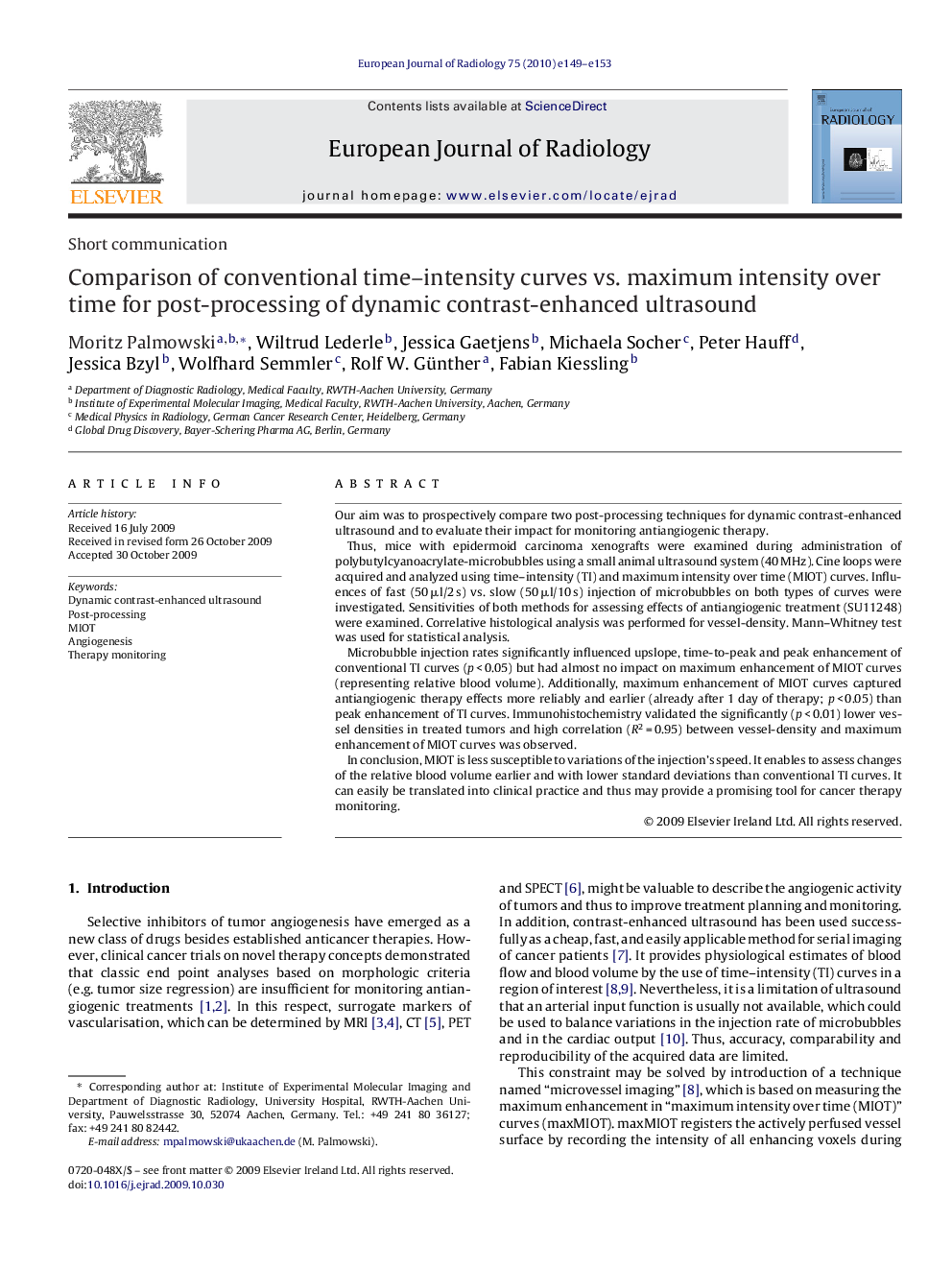| کد مقاله | کد نشریه | سال انتشار | مقاله انگلیسی | نسخه تمام متن |
|---|---|---|---|---|
| 4227178 | 1609813 | 2010 | 5 صفحه PDF | دانلود رایگان |

Our aim was to prospectively compare two post-processing techniques for dynamic contrast-enhanced ultrasound and to evaluate their impact for monitoring antiangiogenic therapy.Thus, mice with epidermoid carcinoma xenografts were examined during administration of polybutylcyanoacrylate-microbubbles using a small animal ultrasound system (40 MHz). Cine loops were acquired and analyzed using time–intensity (TI) and maximum intensity over time (MIOT) curves. Influences of fast (50 μl/2 s) vs. slow (50 μl/10 s) injection of microbubbles on both types of curves were investigated. Sensitivities of both methods for assessing effects of antiangiogenic treatment (SU11248) were examined. Correlative histological analysis was performed for vessel-density. Mann–Whitney test was used for statistical analysis.Microbubble injection rates significantly influenced upslope, time-to-peak and peak enhancement of conventional TI curves (p < 0.05) but had almost no impact on maximum enhancement of MIOT curves (representing relative blood volume). Additionally, maximum enhancement of MIOT curves captured antiangiogenic therapy effects more reliably and earlier (already after 1 day of therapy; p < 0.05) than peak enhancement of TI curves. Immunohistochemistry validated the significantly (p < 0.01) lower vessel densities in treated tumors and high correlation (R2 = 0.95) between vessel-density and maximum enhancement of MIOT curves was observed.In conclusion, MIOT is less susceptible to variations of the injection's speed. It enables to assess changes of the relative blood volume earlier and with lower standard deviations than conventional TI curves. It can easily be translated into clinical practice and thus may provide a promising tool for cancer therapy monitoring.
Journal: European Journal of Radiology - Volume 75, Issue 1, July 2010, Pages e149–e153